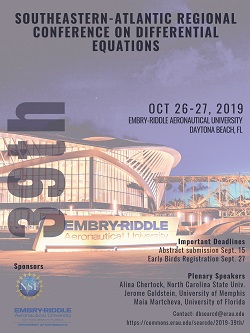Institution
Florida State University
Abstract
Supercritical Carbon Dioxide (sCO2) is a promising working fluid for many applications across a wide range of industries. One such example is in advanced cycles, including those for power generation (e.g., Brayton cycle), because of increased power density. While research on experimental engineering has revealed interesting physical aspects of supercritical fluids, open questions remain about the fundamental physics of these flows. In this investigation, we study sCO2jets to gain a better understanding of the underlying physics and the influence of non-ideal variations in the physical properties of supercritical fluids. We study the impact of a cubic equation of state on turbulent flow physics using PeleC, a first-principles simulation code that leverages second order finite volume methods with adaptive mesh refinement. We implement the Piecewise Parabolic Method with a standard second order Runge-Kutta method to approximate our solutions. The system of partial differential equations is closed using the Soave-Redlich-Kwong equation of state. Special attention is paid to the stability of coupling the cubic equation of state with the Navier-Stokes equations. Simulations for the sCO2turbulent round jet are performed at 330 K and 10 MPa, conditions that are above the critical point of 304.25 K and 7.39 MPa, where new insight is needed for engineering design. We then examine velocity and Reynolds stress profiles at different downstream locations and contrast these with established theory. We explore cases with differing jet and ambient fluid temperatures to study the effect of thermal property variation in supercritical fluids.
Investigating the Impact of Supercritical Fluid Properties on the Turbulence Physics of the Round Turbulent Jet
Supercritical Carbon Dioxide (sCO2) is a promising working fluid for many applications across a wide range of industries. One such example is in advanced cycles, including those for power generation (e.g., Brayton cycle), because of increased power density. While research on experimental engineering has revealed interesting physical aspects of supercritical fluids, open questions remain about the fundamental physics of these flows. In this investigation, we study sCO2jets to gain a better understanding of the underlying physics and the influence of non-ideal variations in the physical properties of supercritical fluids. We study the impact of a cubic equation of state on turbulent flow physics using PeleC, a first-principles simulation code that leverages second order finite volume methods with adaptive mesh refinement. We implement the Piecewise Parabolic Method with a standard second order Runge-Kutta method to approximate our solutions. The system of partial differential equations is closed using the Soave-Redlich-Kwong equation of state. Special attention is paid to the stability of coupling the cubic equation of state with the Navier-Stokes equations. Simulations for the sCO2turbulent round jet are performed at 330 K and 10 MPa, conditions that are above the critical point of 304.25 K and 7.39 MPa, where new insight is needed for engineering design. We then examine velocity and Reynolds stress profiles at different downstream locations and contrast these with established theory. We explore cases with differing jet and ambient fluid temperatures to study the effect of thermal property variation in supercritical fluids.


Comments
View Parallel Session